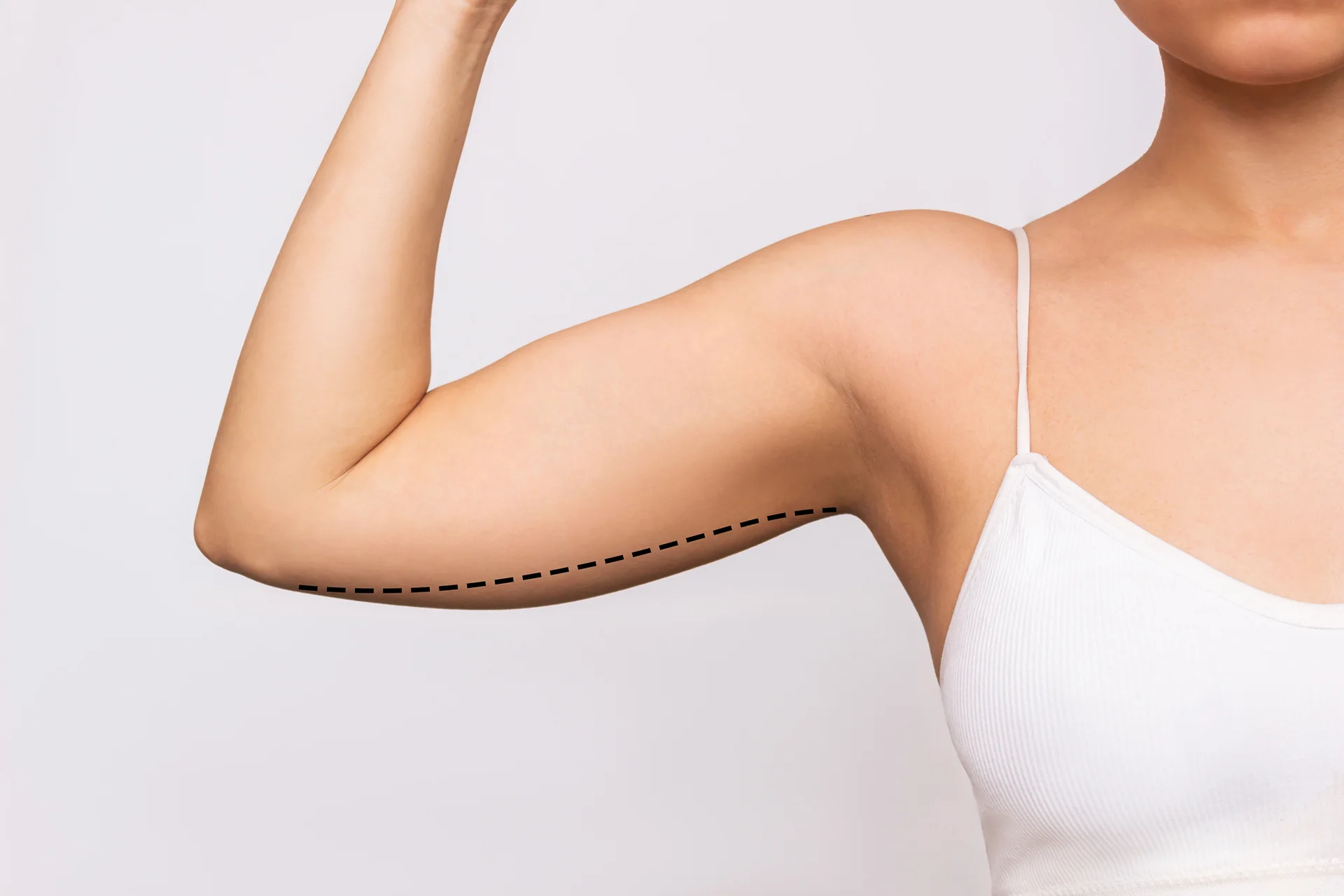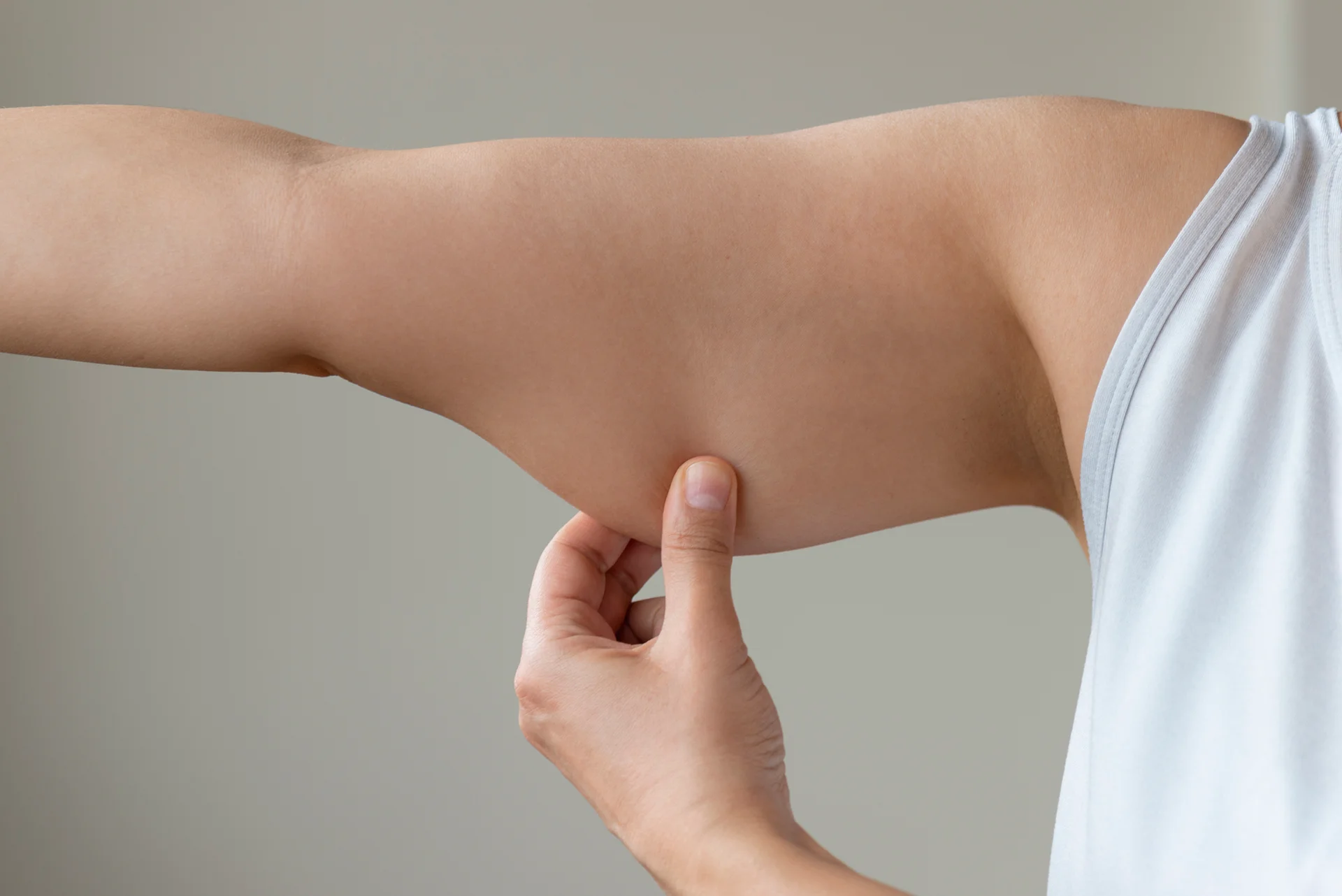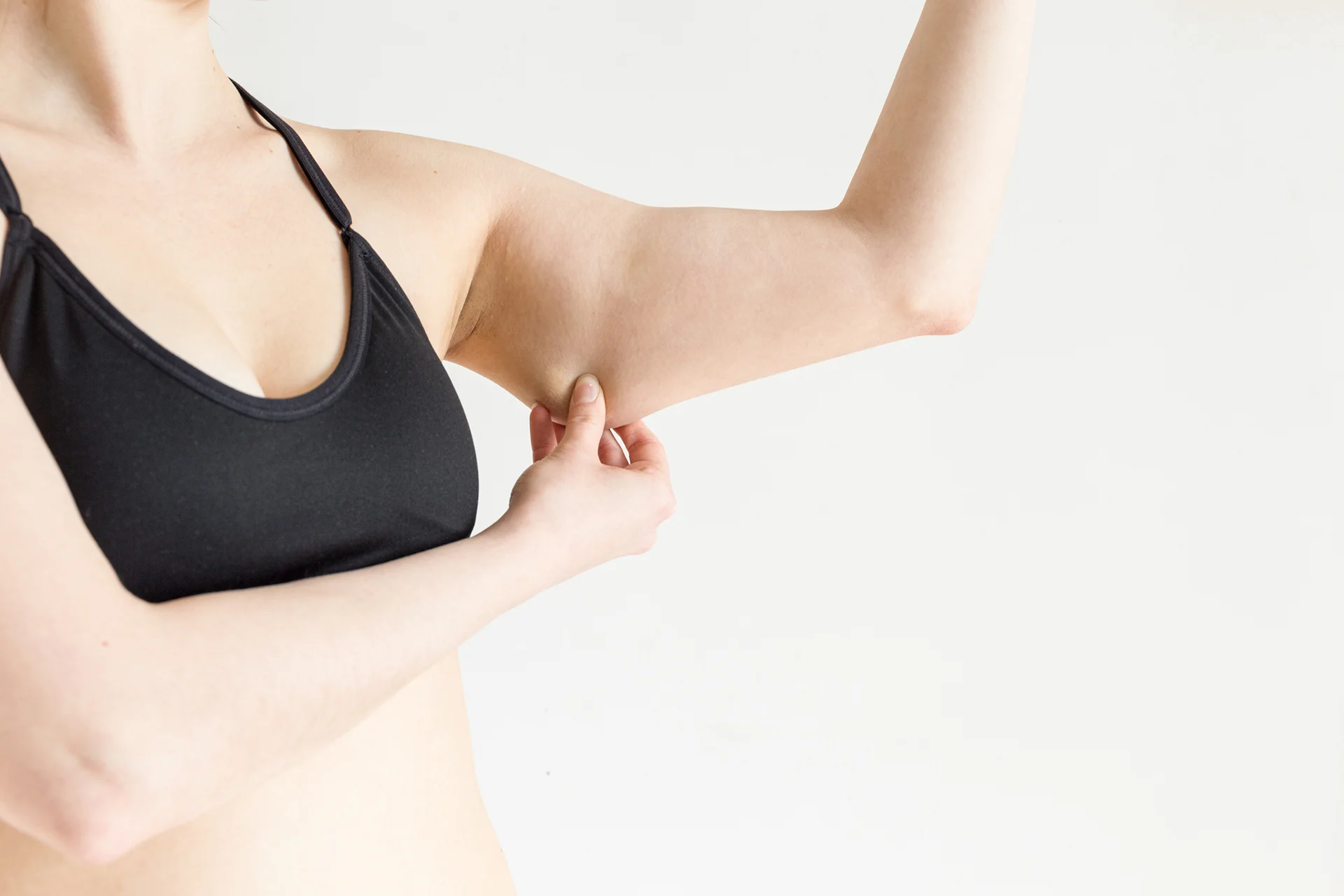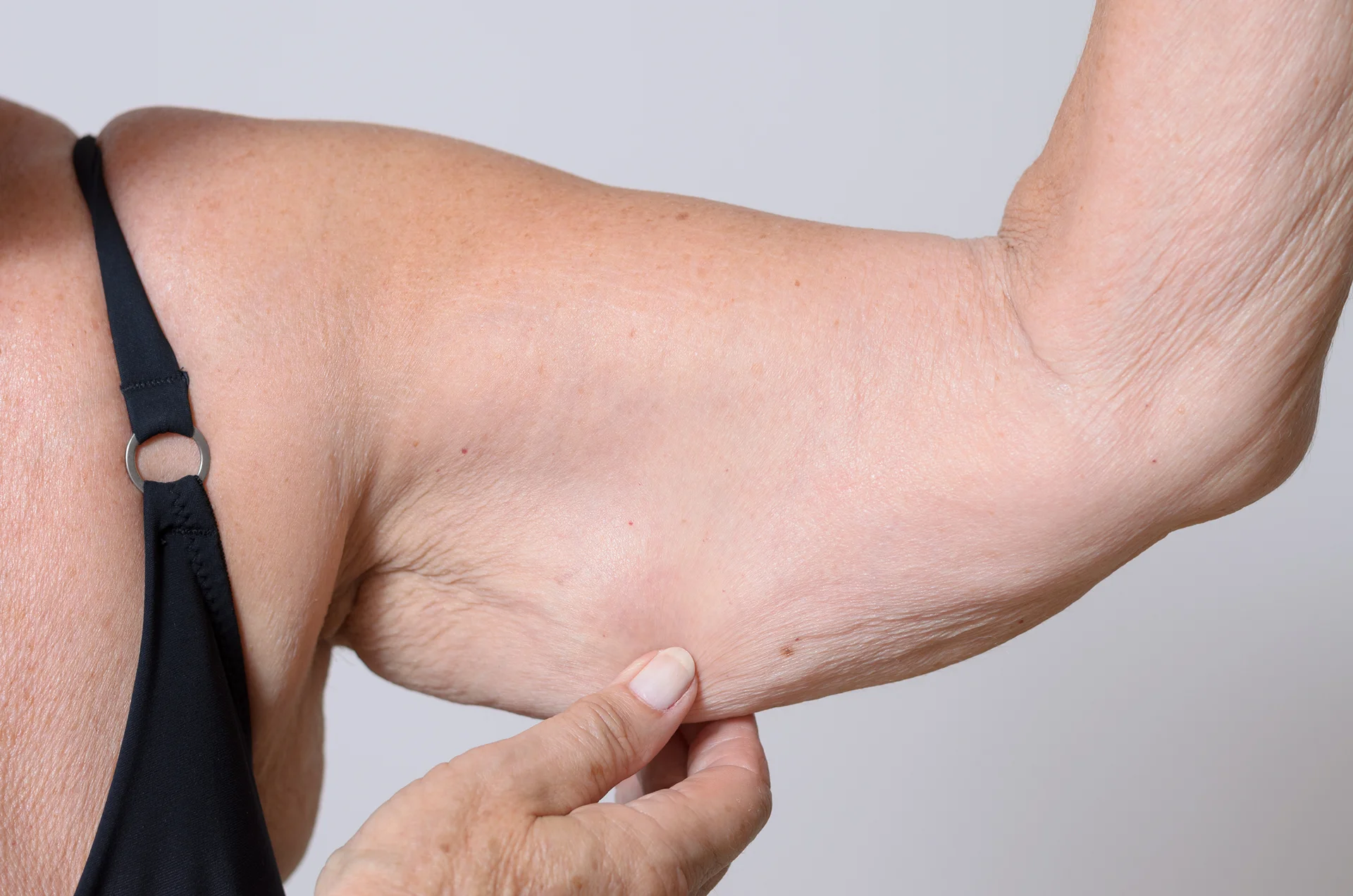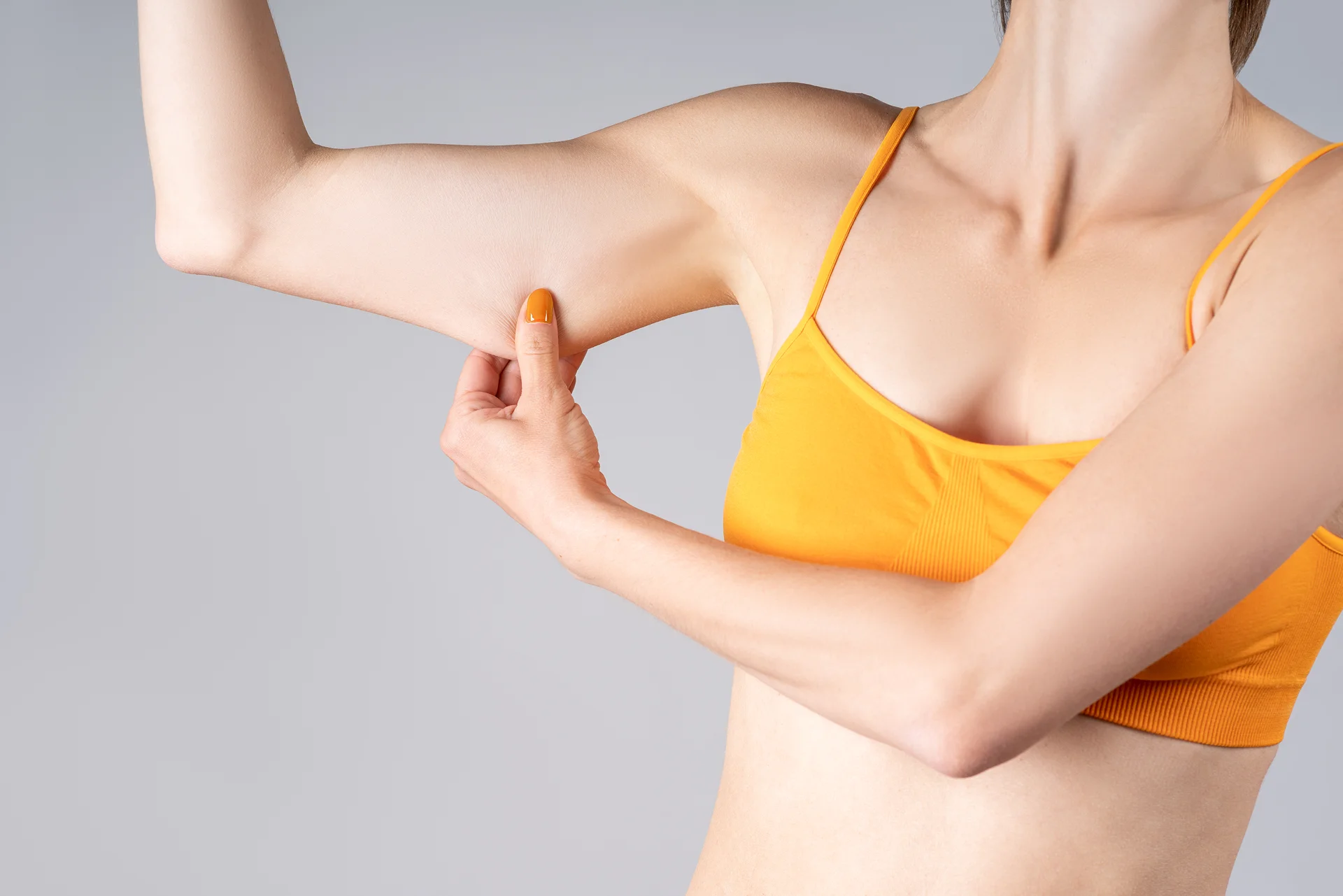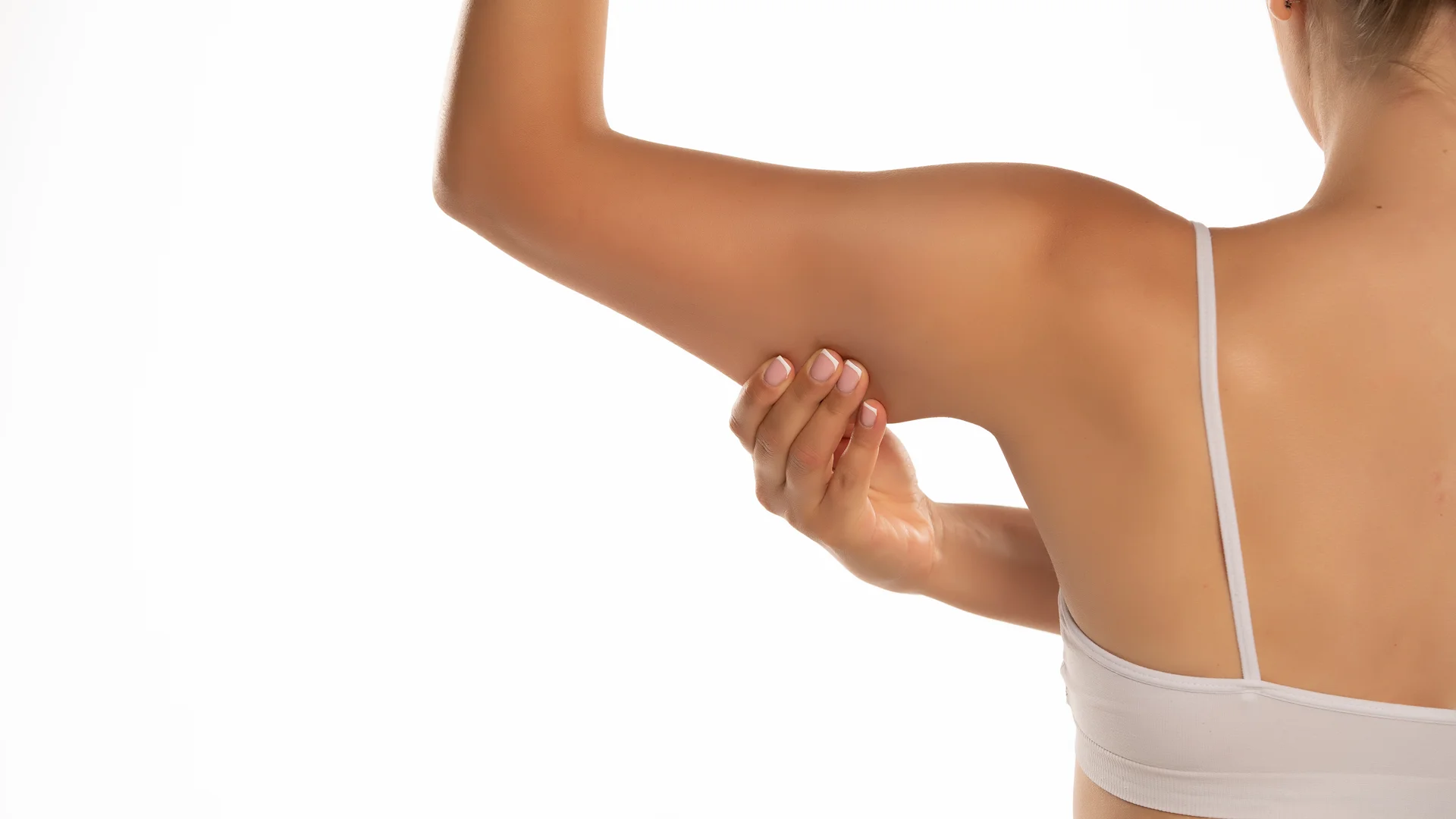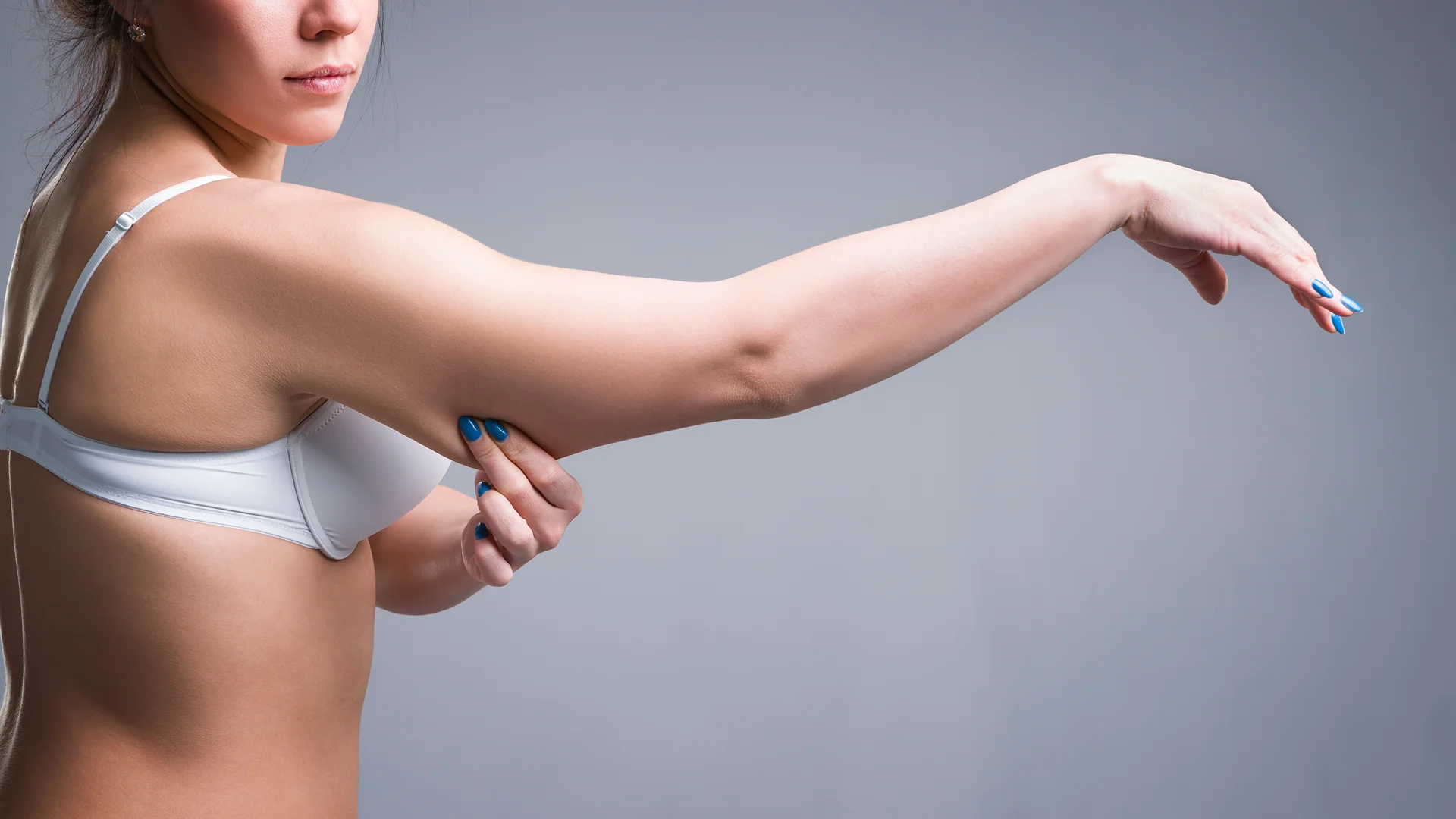Get Answers on How to Manage Arm Discomfort Following Your Arm Lift Surgery
Brachioplasty, commonly known as an arm lift, can provide stunning improvements to the upper arms by removing excess, sagging skin and tightening underlying tissues. However, it is a major surgical procedure and some postoperative pain and discomfort is to be expected. One common complaint is forearm pain after brachioplasty.
If you are experiencing shooting, tingling, or soreness in your forearm area after your arm lift, you likely have questions and concerns. Read on to find out what causes forearm pain after brachioplasty, how long it may last, and what you can do to find relief.
What Causes Forearm Pain After Brachioplasty?
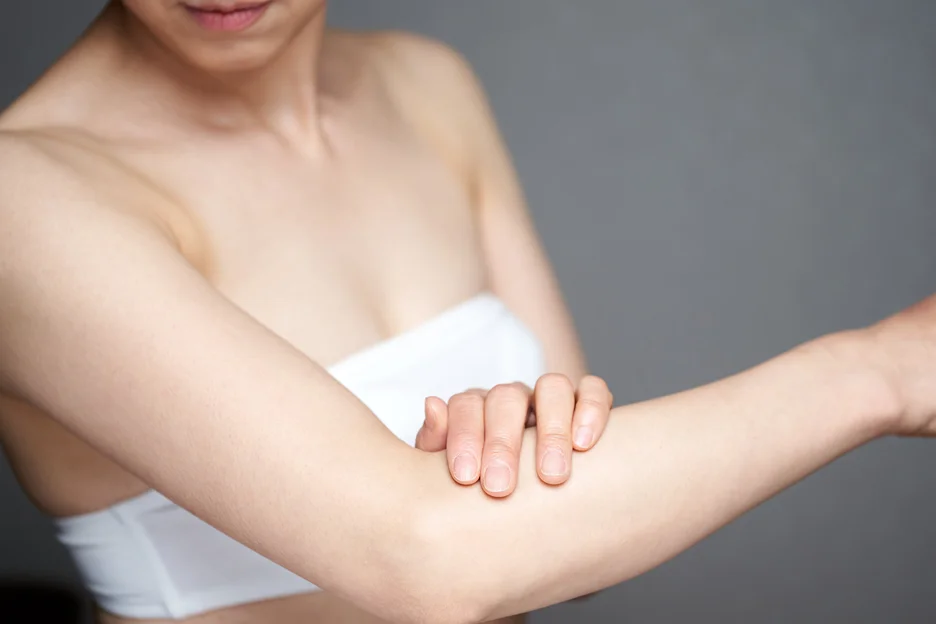
There are a few potential reasons you may be dealing with forearm discomfort following your arm lift:
Nerve Irritation or Damage
During the arm lift procedure, the surgeon makes incisions along the inner arm and manipulates tissues to remove excess skin and fat. The nerves that run through the arm and forearm can become irritated or even damaged in the process. This nerve trauma is typically temporary as the nerves heal, but it can cause numbness, tingling, or shooting pains down the forearm.
Inflammation
Swelling and inflammation are normal parts of the healing process after surgery. The inflammation triggers pain receptors which can radiate or refer pain down the forearm. As the swelling presides over the first few weeks, this type of forearm pain usually subsides.
Strain on Arm Muscles
In the first month after surgery, it’s important to avoid strenuous use of your arms to allow healing. However, regular daily activities still require some arm motions which can put strain on the healing tissues. This can indirectly cause soreness or aching in the forearm region.
Tissue Manipulation in Upper Arm
Some brachioplasty techniques include liposuction or contouring of the upper arm area in addition to tissue removal on the inner arm. Manipulation of tissues higher up on the arm could potentially contribute to postoperative forearm pain.
Experience a smoother recovery with Dr. Darren Smith’s expert brachioplasty techniques designed to minimize discomfort and speed up the healing process
When Does Forearm Pain After Brachioplasty Resolve?
The good news is that forearm discomfort due to brachioplasty is usually temporary. Here is the typical time frame for resolution:
| Condition | Typical Recovery Time |
| Nerve pain | 4 to 6 weeks |
| Numbness or tingling | Up to 3 to 4 months |
| Post-surgical inflammation | 2 to 4 weeks |
| Arm strain | 4 to 6 weeks |
| Tissue manipulation discomfort | Within 6 weeks |
If you still have persistent forearm pain beyond 3 to 4 months, contact your plastic surgeon to discuss the cause and treatment options. Unresolved nerve pain may require special therapy.
How to Find Relief from Forearm Pain
While forearm pain after brachioplasty often goes away on its own, there are some effective remedies to help manage discomfort until it subsides:
- Take over-the-counter pain medication such as ibuprofen or acetaminophen, as directed by your surgeon. This helps reduce inflammation.
- Apply cold compresses or ice packs to the forearm for 15 minutes several times a day to alleviate nerve pain and swelling.
- Keep your arm elevated on pillows to reduce fluid buildup and inflammation.
- Once approved by your surgeon, begin gentle forearm and hand stretches and massages.
- Consider wearing a compression garment on your arm to provide support and discourage swelling.
- Apply topical arnica gel to help reduce bruising.
- Avoid heavy lifting, repetitive motions, or other arm straining activities.
- Ask your surgeon about nerve pain medications or injections if needed.
When to See Your Surgeon About Forearm Pain
Some degree of forearm pain and discomfort is normal after brachioplasty surgery. However, you should contact your plastic surgeon promptly if you experience any of the following:
| Signs and Symptoms | |
| 1 | Severe pain that is not relieved by prescription pain medication, over-the-counter pain relievers, ice packs or other at-home treatments. Worsening pain over time is also a cause for concern. |
| 2 | Excessive bruising or redness around the incision sites that continues to spread days after surgery. Some bruising is normal but expanding redness can indicate infection. |
| 3 | Any pus-like or foul-smelling drainage from the incisions, which is a sign of surgical site infection. |
| 4 | Persistent numbness, tingling, or loss of sensation in the forearm, hand or fingers lasting longer than 4 months post-op. This may signal nerve damage. |
| 5 | Weakness or impaired function in the arm, hand, wrist or fingers that makes it difficult to complete normal daily tasks like writing, gripping objects, lifting things, etc. |
| 6 | Fever over 101°F, which could be a sign of developing infection. |
| 7 | Swelling, redness or warmth in the arm or hand, which may indicate a blood clot. |
| 8 | Any other signs of poor healing such as incisions that are not closing properly. |
While mild forearm pain and temporary numbness are common during the first few weeks after surgery, severe or worsening pain warrants prompt medical attention to address potential complications or improve your comfort during recovery. Do not hesitate to contact your surgeon with any concerns.
Don’t let post-surgery concerns linger. Contact Dr. Darren Smith for prompt, professional advice and ensure your recovery is on the right track
Get Relief from Arm Pain and Discover Your New Look
Forearm pain is unpleasant but generally resolves within a few months after brachioplasty. Patience and proper arm care can help you push through the discomfort until full healing occurs.
Once you recover, you can finally enjoy the dramatic improvements to your upper arms that make all the hard work worthwhile!
Dr. Darren M. Smith – Premier Expert in Aesthetic Surgery
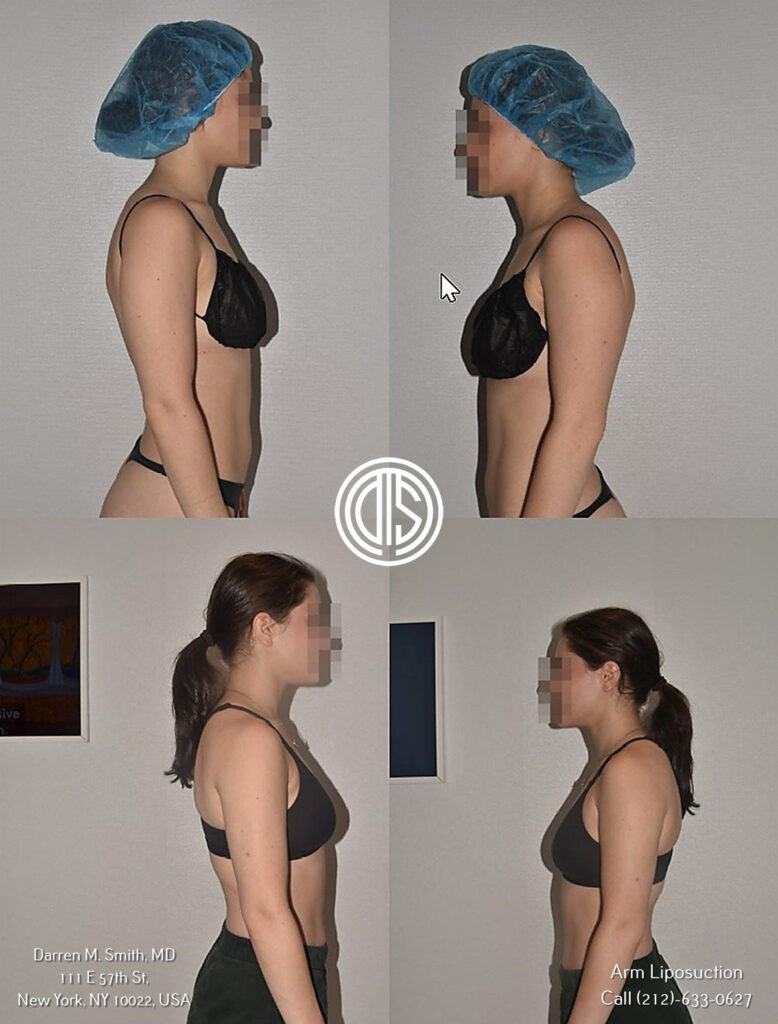
Board-certified plastic surgeon Darren M. Smith, MD is among New York’s premier experts in aesthetic surgery and cosmetic injectable treatments. Dr. Smith has unparalleled training in the art of cosmetic enhancements, and this background forms the foundation of the excellent results he achieves for his patients.
He is trained far more extensively than most practitioners, and is in fact one of the only plastic surgeons in the nation to have completed a craniofacial surgery fellowship and an aesthetic surgery fellowship.
In NYC, you can find a wide array of medical professionals to perform physical enhancements, but few have benefited from the extensive education and training that Dr. Darren Smith will bring to your care.
A true expert in aesthetic surgery and cosmetic injectables, Dr. Smith performs every procedure with meticulous attention to detail, the most advanced techniques, and a dedication to achieving an exceptionally attractive outcome.
To schedule a consultation with Dr. Darren M. Smith and learn more about how he can help you achieve your aesthetic goals, call +1(212) 633-0627 or book an appointment online today.
Frequently Asked Questions About Forearm Pain After Brachioplasty
What helps with forearm pain after brachioplasty?
Apply cold compresses, keep your arm elevated, take over-the-counter pain medication, gently stretch and massage, and avoid strenuous arm motions to help relieve forearm pain after brachioplasty.
Why do I have tingling in my forearm after brachioplasty?
Tingling or numbness in the forearm after brachioplasty is usually caused by irritation or inflammation of the nerves during surgery. This nerve discomfort generally starts improving within 4-6 weeks and continues resolving over 3-4 months as the nerves heal.
When should I worry about forearm pain after brachioplasty?
Contact your plastic surgeon promptly if you have severe or worsening forearm pain, excessive bruising or swelling, drainage from incisions, numbness lasting over 4 months, or weakness making it difficult to use your arm normally.
How long does arm pain last after brachioplasty?
It is normal to have mild arm pain for 4-6 weeks after brachioplasty, improving as swelling decreases and tissues heal. Forearm pain usually resolves more quickly within 2-4 weeks post-surgery.
What causes forearm bruising after brachioplasty?
Bruising in the forearm region after brachioplasty is caused by the effects of surgery spreading through the arm’s interconnected tissues. It often tracks down from the upper arm incision toward the elbow. Bruising should fade within 2-3 weeks.
